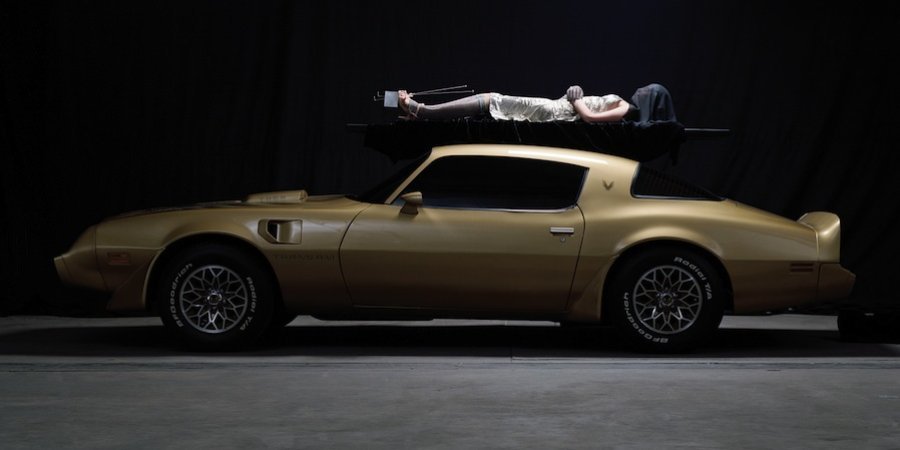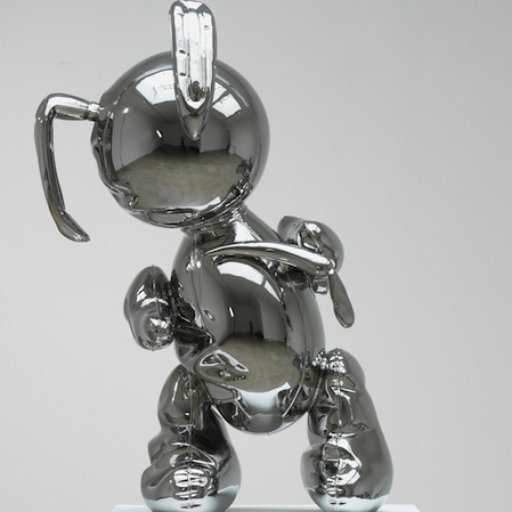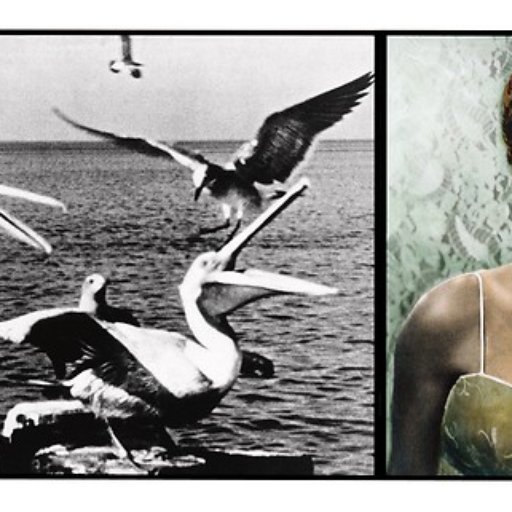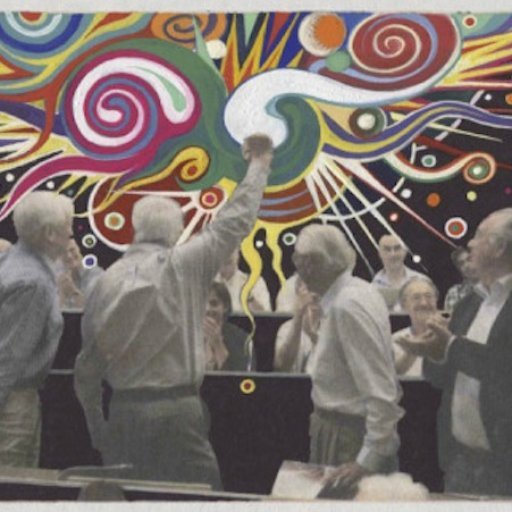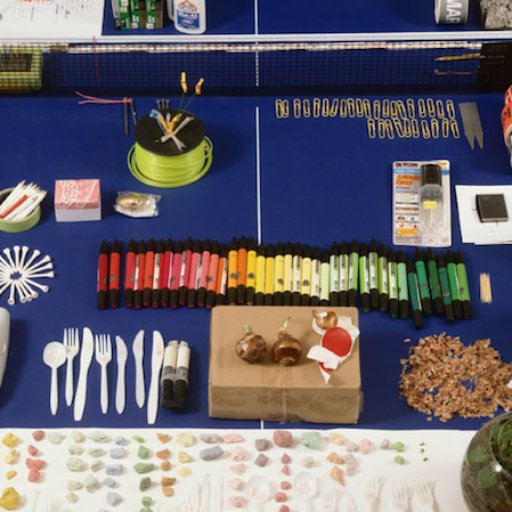"I won't tell you to enjoy yourselves, that is not the point. But I hope it is...of interest." With that brief but hedging introduction from composer and collaborator Jonathan Bepler, Matthew Barney's latest film, River of Fundament, flowed forth for the first time at Brooklyn Academy of Music's Harvey Theater on Wednesday evening. Indeed, six hours of art in which reverent closeups of sewage wash over the screen repeatedly is a lot to lay on even the most devoted acolyte of the artist.
Yet, in truth the film—which aspires to be opera, with much music and singing throughout—is immunized against most critiques by Bepler's proviso, "That's not the point." Viewers felt every minute of the film's passing in part because of Barney's slender vocabulary of framing techniques and undifferentiated editing, but technically flawless filmmaking is not the point. The multiple narratives about jealous gods, reincarnated pharaohs, and Norman Mailer are confounding, but limpid storytelling is not the point. So what is Barney's point?
It's complicated, particularly if one approachs a Barney film expecting it to be "about" something crisply describable. Barney's movies are never "about" anything, except in the most grandiose of terms—they're closer to imposing visual tone poems. The five films of the "Cremaster Cycle," for example, analogize the development of gender to the artistic process. In their best moments, however, those films offer stunningly beautiful and strange tableaux. The flow of imagery is built not around a story so much as an idiosyncratic lexicon of signifiers and referents. Puzzling them together, though never quite possible, holds out the promise of profundity, or at least satisfaction.
In River, the superbly composed spectacles are less in effect, with more emphasis given to driving the multiple interwoven plotlines along. But there remain a catalog of symbols that relate back to Barney's longtime obsessions, which his fans will want to sift through and ponder. Understanding some of these will not help you to digest the entirety of the film, but they may shed some light on its mysteries.
1. NORMAN MAILER
The prominent postwar American author is both the source and the subject here. Barney has loosely based much content on Mailer's 1983 pharaonic novel Ancient Evenings, itself a layered rambling epic that tells of Menenhetet the First, who prepares for his next incarnation by begetting the vessel of that life with his own granddaughter, Hathfertiti. The essential tales of the Egypt's founding gods-—Osiris, Isis, Set, and Horus—and the land of the dead are also revived in Mailer's scatalogical fashion. Barney combines these threads with the story of Mailer himself as recounted by people attending a wake at his Brooklyn home. This is perhaps the most intriguing through line in the film because it seems to simultaneously be based on a sort of reverence for the man, and a critique of many of the guests who pretend to revere him but use reminiscences for their own ends. Mailer appears in the film through copious photographs and three avatars, one of whom is played by the author's own son, John Buffalo Mailer—a very good sport considering scenes such as the one where he crawls inside a dead cow.
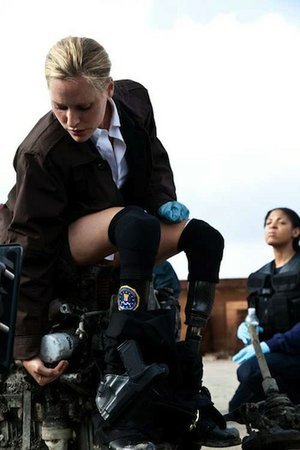
2. BODILY EXCRETIONS
The "Cremaster Cycle" is filled with references, both explicit and sublimated, to feces, mucous, urine, and semen—that last to be expected of a film series named for the cremaster, the muscle by which the male gonads descend. One of Barney's most engaging ongoing struggles is to create metaphors that tie issues of psychological development back to the human body—it's a sort of wistfully Freudian enterprise in the age of sterile conceptual art. In this movie, feces in particular plays a central role—the "river" of the title is said to be composed of it, and we see it exiting and re-entering a number of orifices over the course of the movie. It should be noted that Mailer provided the ammunition in Ancient Evenings by intertwining death, the land of the dead, and reincarnation with, well, shit and sodomy. Barney has merely embraced the theme.
3. FAST CARS
This motif is all Barney. Cremaster 4 included some fantastically outfitted motorcycles racing around the Isle of Man, and Cremaster 2 featured an extended scene with two Ford Mustangs that were stand-ins for the murderer Gary Gilmore and his girlfriend. Here the cars are a Chrysler Imperial Crown and a Pontiac Trans Am that are going through the same stages of death and reincarnation as Osiris, Menenhetet, and Mailer. Putting these vehicles through the process of physical demise results in two of the most visually dramatic scenes in River. At a Los Angeles car dealership the Imperial is cut to pieces (as Set cut up Osiris) by a giant saw that sends chunks of metal flying. Later, near Detroit, the metal is melted down in four giant furnaces on the banks of a river to create a new Chrysler chassis. In a 2011 show at Gladstone Gallery, Barney exhibited the props that result from this spectacle, including the chassis, designed to resemble a heiratic totem from ancient Egypt, the djed, which furnished the name for that show.
4. METAMORPHOSIS AND SHAPESHIFTING
Again nothing new here. Barney has long been interested in having a single character take different forms as he or she evolves and sometimes uses different actors to personify the changes. On one level the "Cremaster Cycle" is the story of the transformation from female to male. River, with its narrative of threefold reincarnation, acted out in parallel by gods, pharaohs, writers, and automobiles is an orgy of mutability. One of Barney's star actresses, Aimee Mullins, is often the vehicle for the shapeshifting due to the fact that she wears prosthetic legs as the result of childhood amputations. In Cremaster 3, she memorably transformed in to cheetah; in River, her legs morph into different objects including long blades. More prosaically, she appears as two (or three?) different characters: the lead police investigator in Detroit and a woman in Mailer's apartment who reappears strapped to the roof of the Imperial.
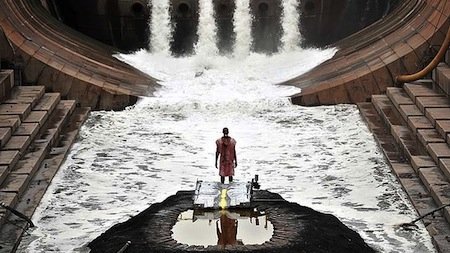
5. LOCATION, LOCATION, LOCATION
One of Barney's talents is his ability to anchor his stories in a strong sense of place, often by choosing dramatic and unique settings such as the lush Isle of Man, the opulent Hungarian State Opera House, the barren Bonneville Salt Flats. River is set in four locations—Los Angeles, Detroit, New York City, and the open spaces near Ketchum, Idaho—as well as the sewers that are the afterlife's river of feces. In the film the cities do not rise to the level of being distinctive characters in their own rights, perhaps because they have been overexposed, but we get to see quite a bit of them, particularly in the sequences that take place in Detroit. In the scenes shot from the balcony of Mailer's Brooklyn home (which in the final act is relocated onto a barge floating down the East River), it should not be surprising that Barney is unable to reclaim the Manhattan skyline from so many Woody Allen films. However, in the climactic battles at the Brooklyn Navy Yards and the Gowanus Canal, the artist captures something of the city's infrastructural quidity, perhaps because he's so familiar with the neighborhood (his studio is there). Finally, Ketchum, the site of Hemingway's last home, most convincingly speaks to the content of the scenes set there. One of his Barney's favorites themes is the notion of solitude and individual freedom being embodied in the great open West. After the claustrophobia of River's many city scenes, Idaho expresses that spirit here.
6. ENDURANCE
Matthew Barney first made his name through his "Drawing Restraint" pieces, performances in which the former Yale football player contrived obstacle courses and various shackles and harnesses to encumber him as he tried to execute a drawing—an elaborate enaction of the virtues of difficulty in art. The idea of physical exertion and extermity is very important to his films as well. In Cremaster 3 he scales the Guggenheim's rotunda from the outside in, and in River a number of scenes call upon the actors to do rather extreme things with their own and one another's bodies. In a more uplifting demonstration of human accomplishment, the twin brothers who play Set intermittently demonstrate their facility with opera.

7. BIRDS AND SNAKES
One of the most moving scenes in the entire "Cremaster Cycle" occurs in Cremaster 5 when Jacobin pigeons take flight trailing ribbons tied to the Queen, played by Ursula Andress. River opens with a bird being shot, but it is a rather regal vulture that makes repeated appearances, an obvious choice for its allusion to death. More than that, it seems to be paired with the other recurring animals, snakes, as the masculine and feminine forces that escort the protagonists through the experience of death. Barney's wife at the time of Cremaster 5, Mary Farley, raised exotic birds, giving a more personal reinforcement of the notion that birds somehow symbolize the feminine. Snakes, on the other hand, carry masculine connotations, for rather obvious reasons.
8. ERNEST HEMINGWAY
Hemingway opens the film, specifically by loading a cartridge into the shotgun like the one used to take his life—but why is he here? Perhaps he is part of the chain of reincarnation that links all great writers through time, from the first Egyptian author (Ptah-Nem-Hotep played by Paul Giamatti) to Mailer. Perhaps he is just the perfect embodiment of manly father figure that seems to feed Barney's imagination. Perhaps the notion of suicide is what is being introduced by his character, but to what end? These little mysteries are the things that can make a six-hour Barney epic, if not enjoyable to everyone, at least fodder for copious future meditation in a safe, quiet place.











